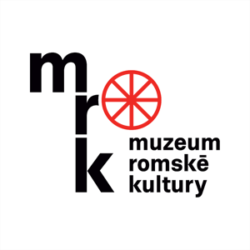František Klempár
František Klempár, born 1925, Veľká Lesná, Stará Ľubovňa district
-
Testimony abstract
František Klempar's father fought in the First World War as a legionnaire in Russia.
František Klempár was conscripted in 1943. He was assigned to the army, but to a work unit – like about twenty other Roma, he was given a uniform and received training, but was not given a weapon. Three months later, the Germans came and selected men for the front in Italy.[1] František Klempár was also supposed to go to the front, but he was sent back. Before Christmas, he said, they handed out identity cards to the men. Those who had: "Nationality: Slovak – race: Gypsy" written on them were not taken, but the Roma who did not have this written on them were sent to fight. Mirga, the husband of Klempar's aunt, had "race: Aryan", and so he had to go to Italy.
František Klempár then fell ill with rheumatism and was in hospital in Ružomberok for two months. When the [Slovak National] Uprising broke out at the end of August, partisans, including Russians, came to the hospital. Klempár and some other Roma immediately joined the partisans and spent about a month with them in the forest near Biele Potok.[2] On the way there, two Germans caught him and marched him away to be shot, but he managed to escape and get back.
After about a month, the Slovak army came from Poland and drove the partisans to Banská Bystrica, to Prašivá Hill [in the Low Tatras] and to Železný,[3] where they stayed until November 1944, when the Germans invaded. They were ordered by the Russian commander Yegorov[4] and his deputy Jozef Podhora from Bratislava to run home before the Red Army arrived. Some stayed; František Klempár said that the Slovaks were different from the Roma in this respect – while he wanted to be with his wife and children as quickly as possible, the Slovaks wanted to fight and obtain a rank. Klempár escaped with two other Roma, one from the village of Stará Lesná, the other from the village of Spišský Štvrtok – this one was shot in the leg while escaping and died as a result of his wounds in 1948. They were stopped by gendarmes who had joined the [Slovak National] Uprising. One of them led them to the village of Ploštín,[5] where Jews were hiding in a bunker underneath a large tree which had a door cut into it. Despite his fear of the Germans, Klempár cleaned the water supply leading to the hiding place. He and the gendarmes parted after a while, but before that he told one of them that he was heading to the village of Štôla, where his wife had a married sister. But the gendarme told him that he had personally shot the woman's husband, i.e. Klempár's brother-in-law, because he was posing as a partisan and intended to rape girls. Then at night Klempár saw the gendarme with a gun and thought he was going to shoot him, but the gendarme thought the same of him. So they made an agreement between them that they would not harm each other, and they walked together for two more days.
Klempár and two Romani men then came to the Romani people in Porúbka,[6] who were very poor. They gave the Roma their new clothes and took their old ones. The Roma chief sent women with them so that the men themselves would not be conspicuous in the forest. The women took them along the road to the village of Hybe and on to the village of Važec, where the refugees already had friends. If the Germans had met them, they were to say that they were married couples. The Roma who went with him stayed with relatives in Važec, and Klempár left early the next morning by train for Poprad. On the train he saw some known partisans, Slovaks, whom the Germans were taking to Poprad to the Gestapo, but they did not betray him. From Poprad he continued by train to the town of Podolínec, where there were many Germans, and then to the village of Toporec, where he met a Romani friend, the musician Chičuris.[7] In a settlement above Toporec, he got potatoes and milk from a Romani acquaintance. He was already only twelve kilometres from his home at Richvald.[8] On a hill known as Pustovec, he came across peasants from his home village. They did not betray him; in fact, he gave a message to one of them telling him where his sick brother, also a partisan, was hiding in Ploštín; the next day the family sent a wagon for the sick man. When Klempár finally arrived home, he did not find his parents there. He said that the Germans had driven them out of the village into the forest.[9]
The family did not recognize him, he was haggard and emaciated. He stayed about a week and then his uncle told him to go with them to dig trenches, otherwise the Germans would find him and shoot him. The peasants who were not with the Hlinka Guards had to go digging there too, so they paid Roma to work in their place. Later, an order was issued that everyone had to dig for themselves and the Germans would pay them for their work. He therefore went to the village of Veľký Lipník to get a [work] permit, but there he and two other men were accused of being soldiers and were arrested. František Klempar's father had a well-known notary who advised his son to say that he was only in a labour camp and not a soldier, and that he had thrown away his black uniform because the colour black was unlucky. He eventually got his work permit. About ten men from the local Roma came to work with him - his father, brothers and uncles. Then Klempar's hand swelled up, and because he did not want to work for the Germans, he went to the village of Stripša,[10] where a Polish doctor who worked for the Germans treated his hand and sent him with a certificate to a high-ranking Gestapo officer, who signed the paper with a note that he could be treated at home until May.
About a month later, before midnight, the partisans arrived and panic broke out among the Roma because the partisans wore German coats, but Klempár's father, who had been a legionary in Russia, recognized that they were not Germans and were speaking Russian. František Klempár recognized the warrant officer[11] among them and invited them in. The partisans brought sacks of food, and Klempár then told them where the Germans were and which way they were moving. They stayed for about four days, with someone living in each family. Klempár was told to go with them, but at his parents' request he stayed. No sooner had the partisans left than Svoboda's army arrived, which Klempár joined in January 1945.
- [1] As many witnesses do, he probably confuses the Germans with the Hlinka Guards or other representatives of the fascist regime, as in January 1944 Slovakia was not yet occupied by the German army. However, it is possible that the transfers in the Gypsy labour unit to which Mr Klempár was assigned were made on the instructions of German advisers. (ed.)
- [2] Now part of Ružomberok.
- [3] The settlement of Železnô, now part of the village of Partizánská Ľupča.
- [4] First name not given.
- [5] Now part of the town of Liptovský Mikuláš.
- [6] Probably Liptovská Porúbka in the Liptovský Mikuláš district.
- [7] First name not given.
- [8] The village of Veľká Lesná.
- [9] The forcible eviction of the gypsy settlements from the village was not ordered by the Germans, but on the basis of a decree of the Slovak Ministry of the Interior of 21 July 1943. (ed.)
- [10] Not found.
- [11] Name not given.
František Klempár was peddling footwear coupons, and was caught by a gendarme in the town of Svit [Poprad district]. They beat him up and took him to the police station. He was threatened with up to three years in prison for the crime. At the station, however, Klempár encountered the gendarme with whom he had fled as a partisan from Liptovský Mikuláš. The gendarme gave him food, took him to the train, bought him a ticket home and let him go.
How to cite abstract
Abstract of testimony from: HÜBSCHMANNOVÁ, Milena, ed. “Po židoch cigáni.” Svědectví Romů ze Slovenska 1939–1945.: I. díl (1939–srpen 1944). 1. Praha: Triáda, 2005. ISBN 80-86138-14-3, 782-795 (ces), 796-809 (rom). Testimonies of the Roma and Sinti. Project of the Prague Forum for Romani Histories, https://www.romatestimonies.com/testimony/frantisek-klempar (accessed 10/31/2025) -
Origin of Testimony
Editor Milena Hübschmannová was brought to František Klempár by her friend Marta Bandyová, an actress from the Romen Roma Theatre in Sokolov; Klempár's daughter-in-law also performed in the company. The editor praised Klempár's storytelling talent even after he was already ill. In an interview conducted in April 1985 in Sokolov, he did not keep to the chronological sequence, often going back to the episodes he narrated to specify when they took place. Mrs. Klempárová[1] took part in the interview. The editor omitted two questions she had asked at the end.
- [1] See her testimony in the database.
-
Where to find this testimony




